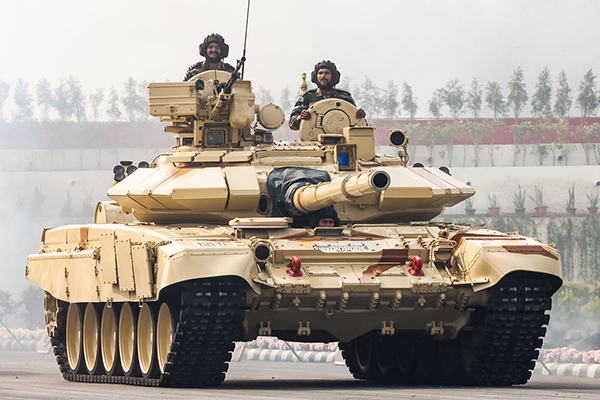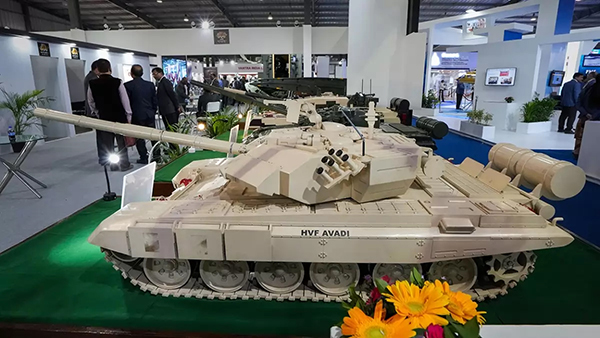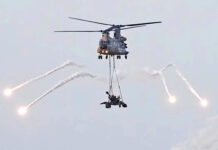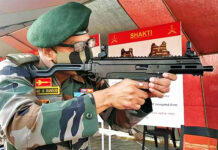Paving the Course of Multi-spectrum Combat Overmatch
Introduction
The ongoing trials of the light tank, system upgrade cum overhaul of T72 and the recent RFP to produce Future Ready Combat Vehicle (FRCV) have raised many eyebrows. Those professing the obituary of tanks and the exaggerated discourse on its suspect role in future battlespace lie disappointed and professionally misplaced.
The utility of a tank lies in its deployability, employability and capability to be the decisive force. Its optimisation lies in its inclusive role as an agile, lethal, and survivable platform to lead the combined arms team and attain combat overmatch across all spectrums of conflict. Thus, the need to understand the role, desired capabilities, and fleet management perspective.
The operational requirement is essentially based on medium-category tanks with light tanks supplementing its capabilities for marginal terrain like Northern borders. This remains the foundation of future operational and equipment construct.
Modernisation Fundamentals and Upgradation Construct
Modernisation fundamentals are foundational to the GSPS 2032 and fleet management perspective which is holistic, realistic and time sensitive. It is also based on prioritised and tiered modernisation based on value, vulnerability, and risk analysis with judicious scaling to address critical operational imperatives. It also looks at a more holistic and contemporary model of “Lethality, Survivability, Agility, Sustainability, Connectivity, and Affordability” based on the commonality of base platform and technology convergence. The focus on indigenous solutions to Indian warfighting remains paramount.
The spiral approach to technology induction emphasizes prioritizing functional capabilities, combat effectiveness, and closing capability gaps with existing technologies. Balancing expansion, modernization and sustenance involves harmonising fiscal requirements, standardising platforms, and evaluating the cost-benefit of sustaining legacy equipment to decrease sustainment costs.
Planned upgrades and overhauls aim to extend tank life beyond 32 years, emphasising sub-system, system, and platform upgrades along with field fitment or medium repair or overall interventions. The emphasis is on a lead integrator and expanded facilities requiring careful planning of space, power, and weight (balance) management, during the design stage for ease of adaptability and timely cum short fitment cycle.


AFV Fleet Management Perspective – SUDRO Model
The endeavour to keep the tank fleet in a 30:40:30 profile guides the “Fleet Management Perspective”. The framework accordingly focuses on a balanced approach of sustaining the present fleet, modernisation of legacy fleet to contemporary standards and induction of next-generation platform in a time sensitive domain. It also aims at balancing fleet expansion and fleet modernization within pragmatic resource availability.
The pillars of this perspective thus must rest on five key aspects; sustain thecurrent fleet and address voids; upgrade legacy fleet to bridge technological gaps till replacement platforms; develop and induct next-generation state-of-the-art replacement platforms; replace obsolete and beyond service life equipment progressively; and optimize indigenous capability for induction through IDDM category.
Translating it entails life extension and periodic upgrades of T 72 to bring its technology capabilities as close to T90; T-90 medium repairs and modernisation upgrades to state-of-the-art technologies; and FRCV to replace beyond-life equipment which is negative to the cost-benefit of sustaining them.
ALSO READ: L&T’s Light Tank Model, Futuristic Systems Displayed
Future Ready Combat Vehicle (FRCV)
The FRCV program amplifies the Indian Army’s push for a modern battle tank with a robust and flexible base platform that can be adopted into a multitude of specialised armoured fighting vehicles. FRCV will offer multiple options for rapid operational employment enabling the Indian Army to execute operations across the entire continuum of conflict against diverse threats of the adversaries.
The FRCV as the next generation main battle tank is to replace the vintage T-72 Tank Fleet (in service since 1979), which has progressively gone beyond its service life. While the initial fleet of T72 has been replaced by T90, the later production approx. 1770 tanks though upgraded, are not cost-effective to sustain and pose an operational risk due to obsolescence. Even if optimistically inducted in 2030, it will in all probability replace the balance T 72 fleet by around 2045. Thus, the time and operational expediency.
The FRCV was planned to be developed under the Make Project since 2008-09, however, its turbulent journey swayed from a de-novo three-stage turnkey project outside the DPP in 2015, to MAKE 1 under the new DPP 2016 evolved to SP (Strategic Partnership) model in 2017. Accordingly, commencing 2015 multiple RFI’s were floated by Service Headquarters, the last one being in 2024. While the May 2021 RFI was issued and ‘In Principle Approval’ given, the grant of AoN ( Acceptance of Necessity) by MoD is being expedited. The Indian Army is likely to issue a request for proposal (RFP) this year for a project of approximately Rs 57,000 crore to manufacture 1,770 future-ready combat vehicles (FRCVs) in India.
DGMF have listed broad technical parameters under the project brief. The FRCVs, with a weight categorization of 55+/-10% with a high power-to-weight ratio of 27:1 HP/Ton, will have a crew of four. It will be equipped with cutting-edge technologies such as artificial intelligence (AI), drone integration, survivability suites including active protection systems, state of art fire control system, battlefield management systems, beyond line-of-sight strike capability, advanced communication, state of art optoelectronics, vetronics and enhanced situational awareness. Additionally, features like manned-unmanned teaming capability and seamless integration into network-centric warfare environments will enhance the overall operational effectiveness index of the Indian Army (IA) by catering for emerging threats in varied terrain.
A main battle tank is a system of systems and is a fusion of apex technologies existing in the realm of land systems. Successful development under Make-I would result in acquisition, from a successful Development Agency (DA), through the ‘Buy (Indian-IDDM)’ category with indigenous design and Development and a minimum of 50% IC. The Ministry of Defence, GoI, intends to procure quantity 590 FRCV in the first phase.
The project for FRCV will provide a unique opportunity for the Indian Defence Industry to come together and help to build research and manufacturing capabilities to foster technological spinoffs benefitting a host of civil/dual-use applications.


The Light Tank
Recognizing the strategic importance of high-altitude operations, the Indian Army is acquiring an indigenous light tank engineered for agile manoeuvrability and high lethality with other state-of-the-art technologies dovetailed. It aims to counterbalance the capabilities demonstrated by the Chinese Type 15 ‘Black Panther’, a third-generation tank currently operational along the LAC in the Northern borders where T72 or T90 may be terrain restricted.
The broad employment concept of the light tank thus revolves around its superior mobility (strategic, operational, and tactical), versatility, enhanced manoeuvrability (small turning radius, high power-to-weight ratio, and low nominal ground pressure), and lethal firepower especially high angle fire cum missile firing ability supported by state of art electro-optronics, communication and multilayered survivability packaging. Its air portability and desired amphibious capability add to its operational matrix. Its availability would add teeth to limited offensive or quid pro quo operations into enemy territory. Thus, light tanks would add to the credible deterrence posture and warfighting capability in the Northern Front.
Like FRCV light tanks too have had a turbulent history since the mid 1980’s of its approval. The Indian Light Tank (ILT) based on RFI of Apr 2021 has been accorded ‘Acceptance of Necessity (AoN)’ in Sep 2022 to be progressed under two routes – one is the design and development route, in which the DRDO, alongside the industry partner, is working on 59 tanks, and there is another 295, which is under the ‘Make I’ category which will be partially funded by the government as well as development partners. Named ‘Zorawar’, the tank has emerged from a collaborative effort between the Defence Research and Development Organisation (DRDO) and the private entity Larsen & Toubro (L&T). The development technical trials by the developer are underway and likely to be handed over for user trials end of 2024 or early 2025.
ALSO READ:Army Hunts for Light Tanks
Conclusion
The approach to future capability building must be inclusive and not exclusive, based on the larger intent of prevailing in today’s war and generating indigenous capabilities to fight and win future wars. FRCV and Light Tank program are key strategic enablers, which will generate desired capabilities and bridge the future operational mismatch against escalating threats, particularly on the Northern borders.



















